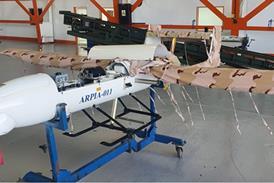David Learmount/LONDON
TAX CHARGES ARE THE prime reason that the UK flying-training industry is unable to compete against US rivals, according to the draft of a study of US flying-training organisations (FTOs) undertaken by the UK General Aviation Manufacturers and Traders Association (GAMTA).
A UK Government-sponsored study says that an accounting comparison between US and UK schools reveals that the primary disadvantages to UK organisations are in cost, tax and regulatory charges and instructor use.
GAMTA says that the reports shows that "-the UK schools run the risk of being uncompetitive, especially after the [UK] Civil Aviation Authority decision to approve overseas FTOs to conduct CAA licence courses".
Benchmarking US organisations to establish marketing, customer service, management and cost-base parameters will help UK training organisations establish goals for future attainment."
Among the findings of the GAMTA study are:
throughout virtually the entire USA, no sales tax is charged on pilot training because it is considered to be educational. In the UK, tax is set at 17.5%, even for foreign customers. In the few US states where tax exists, it is a maximum of 3%;
a US FTO pays no regulatory charge to the Federal Aviation Administration, but the average UK charge is £120,400 ($186,650) in annual CAA fees;
fuel cost in the USA averages 33p/(50¢)litre, against 51p/litre in the UK. The difference comes from fuel duty rates;
there are no landing charges to FTO aircraft at the operator's home base in the USA, and most airfields are subsidised by trust funds. In the UK, where airfields are self-supporting, the average charge is £9/landing.
The report says: "The most significant [operational] difference...is instructor utilisation, where US schools achieve significantly more flying hours from their instructors than in the UK." Averages given are 800h/year for a US instructor and 480h/year in the UK.
The GAMTA report says: "Instructors tend to be of lower average age and experience in the USA." UK instructors average 4,783h, compared with 650h for their US counterparts. Most UK instructors are salaried , but in the USA "-the large majority-were only paid for hours flown, with a slightly lower rate for ground briefings".
All fixed costs, such as those for insurance and hangarage, are firmly in the USA's favour, with the only UK advantage being the "retail engineering labour rate" which, at £24/h, is some £5/h cheaper than the USA.
Source: Flight International























